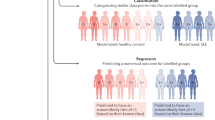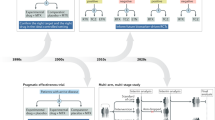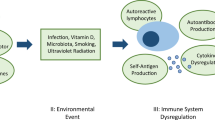Abstract
For many oncological conditions, the application of timely and patient-tailored targeted therapies, or precision medicine, is a major therapeutic development that has provided considerable clinical benefit. However, despite the application of increasingly sophisticated technologies, alongside advanced bioinformatic and machine-learning algorithms, this success is yet to be replicated for the rheumatic diseases. In rheumatoid arthritis, for example, despite an array of targeted biologic and conventional therapeutics, treatment choice remains largely based on trial and error. The concept of the ‘precision gap’ for rheumatic disease can help us to identify factors that underpin the slow progress towards the discovery and adoption of precision-medicine approaches for rheumatic disease. In a rheumatic disease such as rheumatoid arthritis, it is possible to identify four themes that have slowed progress, solutions to which should help to close the precision gap. These themes relate to our fundamental understanding of disease pathogenesis, how we determine treatment response, confounders of treatment outcomes and trial design.
This is a preview of subscription content, access via your institution
Access options
Access Nature and 54 other Nature Portfolio journals
Get Nature+, our best-value online-access subscription
$29.99 / 30 days
cancel any time
Subscribe to this journal
Receive 12 print issues and online access
$209.00 per year
only $17.42 per issue
Buy this article
- Purchase on Springer Link
- Instant access to full article PDF
Prices may be subject to local taxes which are calculated during checkout




Similar content being viewed by others
References
Baretta, Z., Mocellin, S., Goldin, E., Olopade, O. I. & Huo, D. Effect of BRCA germline mutations on breast cancer prognosis: a systematic review and meta-analysis. Medicine 95, e4975 (2016).
Bunting, S. F. & Nussenzweig, A. End-joining, translocations and cancer. Nat. Rev. Cancer 13, 443–454 (2013).
Lieber, M. R. Mechanisms of human lymphoid chromosomal translocations. Nat. Rev. Cancer 16, 387–398 (2016).
Slamon, D. J. et al. Studies of the HER-2/neu proto-oncogene in human breast and ovarian cancer. Science 244, 707–712 (1989).
Pauletti, G., Godolphin, W., Press, M. F. & Slamon, D. J. Detection and quantitation of HER-2/neu gene amplification in human breast cancer archival material using fluorescence in situ hybridization. Oncogene 13, 63–72 (1996).
Berger, B., Peng, J. & Singh, M. Computational solutions for omics data. Nat. Rev. Genet. 14, 333–346 (2013).
Khagi, Y., Kurzrock, R. & Patel, S. P. Next generation predictive biomarkers for immune checkpoint inhibition. Cancer Metastasis Rev. 36, 179–190 (2017).
Slamon, D. J. et al. Use of chemotherapy plus a monoclonal antibody against HER2 for metastatic breast cancer that overexpresses HER2. N. Engl. J. Med. 344, 783–792 (2001).
Falzone, L., Salomone, S. & Libra, M. Evolution of cancer pharmacological treatments at the turn of the third millennium. Front. Pharmacol. 9, 1300 (2018).
Consortium, R.-M. RA-MAP, molecular immunological landscapes in early rheumatoid arthritis and healthy vaccine recipients. Sci. Data 9, 196 (2022).
Grigor, C. et al. Effect of a treatment strategy of tight control for rheumatoid arthritis (the TICORA study): a single-blind randomised controlled trial. Lancet 364, 263–269 (2004).
Brown, P. M., Pratt, A. G. & Isaacs, J. D. Mechanism of action of methotrexate in rheumatoid arthritis, and the search for biomarkers. Nat. Rev. Rheumatol. 12, 731–742 (2016).
Upchurch, K. S. & Kay, J. Evolution of treatment for rheumatoid arthritis. Rheumatology 51 (Suppl. 6), vi28–vi36 (2012).
Madav, Y., Barve, K. & Prabhakar, B. Current trends in theranostics for rheumatoid arthritis. Eur. J. Pharm. Sci. 145, 105240 (2020).
Consortium, R.-M. Characterization of disease course and remission in early seropositive rheumatoid arthritis: results from the TACERA longitudinal cohort study. Ther. Adv. Musculoskelet. Dis. 13, 1759720X211043977 (2021).
Cortesi, L., Rugo, H. S. & Jackisch, C. An Overview of PARP inhibitors for the treatment of breast cancer. Target. Oncol. 16, 255–282 (2021).
Schlam, I. & Swain, S. M. HER2-positive breast cancer and tyrosine kinase inhibitors: the time is now. NPJ Breast Cancer 7, 56 (2021).
Humby, F. et al. Synovial cellular and molecular signatures stratify clinical response to csDMARD therapy and predict radiographic progression in early rheumatoid arthritis patients. Ann. Rheum. Dis. 78, 761–772 (2019).
Humby, F. et al. Rituximab versus tocilizumab in anti-TNF inadequate responder patients with rheumatoid arthritis (R4RA): 16-week outcomes of a stratified, biopsy-driven, multicentre, open-label, phase 4 randomised controlled trial. Lancet 397, 305–317 (2021).
Alghasham, A. & Rasheed, Z. Therapeutic targets for rheumatoid arthritis: progress and promises. Autoimmunity 47, 77–94 (2014).
McInnes, I. B. & Schett, G. Cytokines in the pathogenesis of rheumatoid arthritis. Nat. Rev. Immunol. 7, 429–442 (2007).
Smolen, J. S. & Aletaha, D. Rheumatoid arthritis therapy reappraisal: strategies, opportunities and challenges. Nat. Rev. Rheumatol. 11, 276–289 (2015).
Moots, R. J. & Naisbett-Groet, B. The efficacy of biologic agents in patients with rheumatoid arthritis and an inadequate response to tumour necrosis factor inhibitors: a systematic review. Rheumatology 51, 2252–2261 (2012).
McInnes, I. B., Buckley, C. D. & Isaacs, J. D. Cytokines in rheumatoid arthritis — shaping the immunological landscape. Nat. Rev. Rheumatol. 12, 63–68 (2016).
Robert, M. & Miossec, P. IL-17 in rheumatoid arthritis and precision medicine: from synovitis expression to circulating bioactive levels. Front. Med. 5, 364 (2018).
Schwartz, D. M. et al. JAK inhibition as a therapeutic strategy for immune and inflammatory diseases. Nat. Rev. Drug Discov. 16, 843–862 (2017).
Krishnamurthy, A. et al. Combination of two monoclonal ACPAs induced tenosynovitis, pain and bone loss in mice in a peptidyl arginine deiminase-4 dependent manner. Arthritis Rheumatol. https://doi.org/10.1002/art.42320 (2022).
Zhang, F. et al. Defining inflammatory cell states in rheumatoid arthritis joint synovial tissues by integrating single-cell transcriptomics and mass cytometry. Nat. Immunol. 20, 928–942 (2019).
Croft, A. P. et al. Distinct fibroblast subsets drive inflammation and damage in arthritis. Nature 570, 246–251 (2019).
Pratt, A. G. et al. Targeting synovial fibroblast proliferation in rheumatoid arthritis (TRAFIC): an open-label, dose-finding, phase 1b trial. Lancet Rheumatol. 3, e337–e346 (2021).
Wei, K. et al. Notch signalling drives synovial fibroblast identity and arthritis pathology. Nature 582, 259–264 (2020).
Zhang, F. et al. Cellular deconstruction of inflamed synovium defines diverse inflammatory phenotypes in rheumatoid arthritis. Preprint at bioRxiv https://doi.org/10.1101/2022.02.25.481990 (2022).
Haringman, J. J. et al. Synovial tissue macrophages: a sensitive biomarker for response to treatment in patients with rheumatoid arthritis. Ann. Rheum. Dis. 64, 834–838 (2005).
Alivernini, S. et al. Distinct synovial tissue macrophage subsets regulate inflammation and remission in rheumatoid arthritis. Nat. Med. 26, 1295–1306 (2020).
Culemann, S. et al. Locally renewing resident synovial macrophages provide a protective barrier for the joint. Nature 572, 670–675 (2019).
Orange, D. E. et al. RNA identification of PRIME cells predicting rheumatoid arthritis flares. N. Engl. J. Med. 383, 218–228 (2020).
Andreev, D. et al. Regulatory eosinophils induce the resolution of experimental arthritis and appear in remission state of human rheumatoid arthritis. Ann. Rheum. Dis. 80, 451–468 (2021).
Rivellese, F. et al. Rituximab versus tocilizumab in rheumatoid arthritis: synovial biopsy-based biomarker analysis of the phase 4 R4RA randomized trial. Nat. Med. 28, 1256–1268 (2022).
Chibnik, L. B. et al. Genetic risk score predicting risk of rheumatoid arthritis phenotypes and age of symptom onset. PLoS One 6, e24380 (2011).
Tasaki, S. et al. Multi-omics monitoring of drug response in rheumatoid arthritis in pursuit of molecular remission. Nat. Commun. 9, 2755 (2018).
Buckley, C. D. et al. Immune-mediated inflammation across disease boundaries: breaking down research silos. Nat. Immunol. 22, 1344–1348 (2021).
Hensor, E. M. A. et al. Validity of a two-component imaging-derived disease activity score for improved assessment of synovitis in early rheumatoid arthritis. Rheumatology 58, 1400–1409 (2019).
Radner, H. et al. The impact of multimorbidity status on treatment response in rheumatoid arthritis patients initiating disease-modifying anti-rheumatic drugs. Rheumatology 54, 2076–2084 (2015).
Gharib, M., Elbaz, W., Darweesh, E., Sabri, N. A. & Shawki, M. A. Efficacy and safety of metformin use in rheumatoid arthritis: a randomized controlled study. Front. Pharmacol. 12, 726490 (2021).
Lodi, S., Evans, S. J., Egger, P. & Carpenter, J. Is there an anti-inflammatory effect of statins in rheumatoid arthritis? Analysis of a large routinely collected claims database. Br. J. Clin. Pharmacol. 69, 85–94 (2010).
Aletaha, D. et al. Effect of disease duration and prior disease-modifying antirheumatic drug use on treatment outcomes in patients with rheumatoid arthritis. Ann. Rheum. Dis. 78, 1609–1615 (2019).
Alzabin, S. et al. Incomplete response of inflammatory arthritis to TNFα blockade is associated with the Th17 pathway. Ann. Rheum. Dis. 71, 1741–1748 (2012).
Salomon, B. L. et al. Tumor necrosis factor alpha and regulatory T cells in oncoimmunology. Front. Immunol. 9, 444 (2018).
Eng, G. P. et al. Anti-drug antibodies, drug levels, interleukin-6 and soluble TNF receptors in rheumatoid arthritis patients during the first 6 months of treatment with adalimumab or infliximab: a descriptive cohort study. PLoS One 11, e0162316 (2016).
Sokolove, J. et al. Impact of baseline anti-cyclic citrullinated peptide-2 antibody concentration on efficacy outcomes following treatment with subcutaneous abatacept or adalimumab: 2-year results from the AMPLE trial. Ann. Rheum. Dis. 75, 709–714 (2016).
Tarn, J. R. et al. Symptom-based stratification of patients with primary Sjögren’s syndrome: multi-dimensional characterisation of international observational cohorts and reanalyses of randomised clinical trials. Lancet Rheumatol. 1, e85–e94 (2019).
Woodcock, J. & LaVange, L. M. Master protocols to study multiple therapies, multiple diseases, or both. N. Engl. J. Med. 377, 62–70 (2017).
Pitzalis, C., Choy, E. H. S. & Buch, M. H. Transforming clinical trials in rheumatology: towards patient-centric precision medicine. Nat. Rev. Rheumatol. 16, 590–599 (2020).
Franks, J. M. et al. A machine learning classifier for assigning individual patients with systemic sclerosis to intrinsic molecular subsets. Arthritis Rheumatol. 71, 1701–1710 (2019).
Franks, J. M. et al. Machine learning predicts stem cell transplant response in severe scleroderma. Ann. Rheum. Dis. 79, 1608–1615 (2020).
Jadon, D. R., Stober, C., Pennington, S. R. & FitzGerald, O. Applying precision medicine to unmet clinical needs in psoriatic disease. Nat. Rev. Rheumatol. 16, 609–627 (2020).
Siebert, S., Millar, N. L. & McInnes, I. B. Why did IL-23p19 inhibition fail in AS: a tale of tissues, trials or translation? Ann. Rheum. Dis. 78, 1015–1018 (2019).
Acknowledgements
J.D.I. is a National Institute for Health and Care Research (NIHR) Senior Investigator. The views expressed in this publication are those of the author(s) and not necessarily of the NHS, the NIHR or the Department of Health.
Author information
Authors and Affiliations
Contributions
The authors contributed equally to all aspects of the article.
Corresponding author
Ethics declarations
Competing interests
J.D.I. has received research funding from GSK, Janssen and Pfizer, and speaker and/or consultancy fees from AbbVie, BMS, Gilead, Roche and UCB. F.A.H.C. has received speaker fees from AstraZeneca. A.L. declares no competing interests.
Peer review
Peer review information
Nature Reviews Rheumatology thanks D. Aletaha, A. Filer and D. Poddubnyy for their contribution to the peer review of this work.
Additional information
Publisher’s note
Springer Nature remains neutral with regard to jurisdictional claims in published maps and institutional affiliations.
Rights and permissions
Springer Nature or its licensor holds exclusive rights to this article under a publishing agreement with the author(s) or other rightsholder(s); author self-archiving of the accepted manuscript version of this article is solely governed by the terms of such publishing agreement and applicable law.
About this article
Cite this article
Lin, C.M.A., Cooles, F.A.H. & Isaacs, J.D. Precision medicine: the precision gap in rheumatic disease. Nat Rev Rheumatol 18, 725–733 (2022). https://doi.org/10.1038/s41584-022-00845-w
Accepted:
Published:
Issue Date:
DOI: https://doi.org/10.1038/s41584-022-00845-w
This article is cited by
-
Advancing precision rheumatology through tissue and blood profiling
Nature Reviews Rheumatology (2024)



